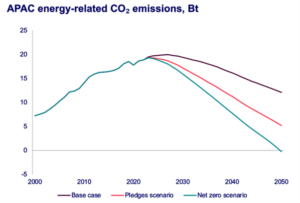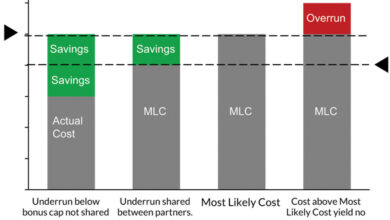Environment, Social and Governance
Wood Mackenzie report: Asia Pacific to hold nearly half of world’s low-carbon tech opportunities by 2050

Home to half of the world’s population, the Asia Pacific is expected to maintain a 50% share of global primary energy demand and a 60% share of global carbon emissions until 2050, according to a new report from Wood Mackenzie. However, the firm also believes the region has the capacity to become a global leader in the energy transition by 2050.
Under the base case scenario, low-carbon supply accounts for 35% of power generation today, and it’s projected to rise to 75% by 2050, while the share of wind and solar increases to over 54%. China is set to achieve a cumulative solar and wind capacity of 2,000 GW by 2030, exceeding its target. By 2050, Australia is poised to lead the Asia Pacific region in renewable power generation, with a share of more than 80%. This growth will be accompanied by the adoption of energy storage, hydrogen, small modular nuclear reactors and geothermal technologies. By 2050, nearly 50% of the world’s new technology opportunities for low-carbon emission is projected to be in the Asia Pacific.
Wood Mackenzie’s report also noted the role that electric vehicles (EVs) will play in the region. EVs are anticipated to rise from 24 million cars today to 635 million by 2050, just in the base case scenario. This will be driven by the affordability and availability of EVs.
Expro to participate in hydrogen demo project in Japan
Expro Group is set to deliver tubular-running services for INPEX under a carbon capture, utilization and storage contract for Kashiwazaki Clean Hydrogen/Ammonia, Japan’s first clean hydrogen production demonstration project.
Expro will deliver multiple sections of casing, liner and tubing across a 12-month period. This scope covers one production well, one injection well and one monitoring well.
The project is a key milestone in Japan’s energy security journey to help produce clean energy from domestically sourced gas. This will be the country’s first project to build an integrated hydrogen and ammonia value chain from production to usage.
NSTA workshop spotlights need for more electrification to cut North Sea emissions
Platform electrification could be key to dramatically cutting emissions from oil and gas production, helping the sector reach net zero, the North Sea Transition Authority (NSTA) said at an industry workshop that was held in Aberdeen, UK, on 20 February.
The NSTA convened the event, inviting leading operators and technology companies to help the industry unlock brownfield projects that would enable existing platforms to run on electricity.
It was noted that power generation made up 79% of UK offshore production emissions in 2022, and electrifying new and existing platforms could deliver carbon savings of up to 22 million tonnes by 2050, nearly half of Scotland’s annual emissions.
Eleven operators delivered presentations outlining the significant engineering challenges they face to convert the power systems on existing platforms while at sea. Breakout sessions were also held with technology suppliers highlighting the technologies available to support the conversion projects.
Cross-sector efforts are ongoing to map out a clear regulatory pathway for electrification schemes, which includes work on grid connections.
In the central North Sea, CNOOC International is working on plans to electrify the Buzzard platform, while a consortium of BP, Shell and TotalEnergies is focusing on installations in the Central Graben Area. Electrification options are also being explored West of Shetland.
The NSTA recently published its draft OGA Plan, which set out that operators would need to evaluate the technical and economic case for electrification of existing assets – and investments must be made to electrify assets where it is reasonable to do so. The NSTA is currently considering responses to last year’s consultation of the draft plan and plans to publish its response in the coming months.
Publication of the draft plan followed a letter to operators outlining the NSTA’s expectations for investments in low-carbon power schemes.




